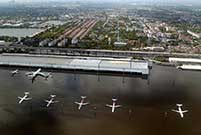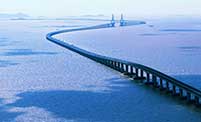

BEIJING, Dec. 30 -- It was heavy storms during freak weather that caused a cruise ship on the Yangtze River to capsize in June killing 442 people, an official investigation has declared.
A State Council investigation team concluded that the incident was "an extraordinarily serious disaster" caused by strong winds and heavy rains resulting from a squall line accompanied by a downburst, a very rare weather phenomenon, according to the official report released Wednesday.
The Eastern Star encountered the squall line during a trip from Nanjing to Chongqing on the night of June 1, and a downburst, instead of a tornado reported previously, produced strong winds that overturned the vessel, the report said.
In a very short time, winds reached level 12 to 13 on the Beaufort scale while rainfall rose to 94.4 millimeters per hour, forcing the ship to capsize within just over a minute, according to the report.
The captain took measures to stabilize the vessel, but the wind force was more than double the maximum level the ship could take, investigators found.
A downburst can be detected by Doppler weather radars, but there is basically no time left for alerts to be sent when the radars are more than 45 kilometers away from where the downburst occurs, said Xu Xiangde, a weather scientist on the investigation team.
The site of the shipwreck was 50 kilometers away from nearby radars, Xu said.
Investigators found that the ship's ability to resist wind pressure conforms to regulations but was not strong enough to stand the extreme weather, according to the report.
The Eastern Star was built in 1994 as a vessel for passenger transport, converted into a cruise ship in 1997 and reconstructed in 2008.
The ship's stability against wind decreased gradually after those projects but was still in line with official requirements, said Wu Yousheng, a ship expert who participated in the probe.
Apart from the Eastern Star, another two ships were hit by the storms in the same river section but did not capsize, because they had much higher wind resistance, said Wu.
Investigators analyzed weather satellite, radar and ground monitoring data, aerial photos and interviews of witnesses.
Experts participating in the probe clarified several issues about the incident, saying a tornado, which had been thought to be the cause for the shipwreck, hit a nearby port minutes before the disaster but did not affect the river area.
The investigation also ruled out speculation that the Eastern Star was in a hurry before the accident occurred, as the bus scheduled to pick up the ship passengers in the next stop was late and the ship was actually slowing down its speed.
Neither did the ship turn around after encountering the adverse weather, according to Song Jiahui, director general of the China Diving & Salvage Contractors Association, who was also on the investigation team.
The captain, Zhang Shunwen, didn't abandon ship before it capsized, Song said.
Zhang climbed out of the window after the ship overturned and swam to the river bank. Later, he and three other crew members came across another ship and reported the accident to the local maritime administration with a borrowed cell phone, Song said.
 Are these the world’s scariest landing strips?
Are these the world’s scariest landing strips? In pics: Left behind children in China
In pics: Left behind children in China Eight modern day engineering marvels of China
Eight modern day engineering marvels of China Chinese beauty with sexiest bottom
Chinese beauty with sexiest bottom Charming female bodybuilders of Chengdu University
Charming female bodybuilders of Chengdu University Polish sports stars strip off for risqué calendar
Polish sports stars strip off for risqué calendar Spectacular aerial photos of the Three Gorges
Spectacular aerial photos of the Three Gorges Contestants of Mrs. Globe pose for photo in Shenzhen
Contestants of Mrs. Globe pose for photo in Shenzhen
 Bikini models attend hot pot banquet in Hefei
Bikini models attend hot pot banquet in Hefei Top 20 hottest women in the world in 2014
Top 20 hottest women in the world in 2014 Top 10 hardest languages to learn
Top 10 hardest languages to learn 10 Chinese female stars with most beautiful faces
10 Chinese female stars with most beautiful faces China’s Top 10 Unique Bridges, Highways and Roads
China’s Top 10 Unique Bridges, Highways and Roads Face of China 2015
Face of China 2015 A hard year 2015’s stories
A hard year 2015’s stories Smartphone makers jockey for dominance of Chinese market
Smartphone makers jockey for dominance of Chinese market Film star's posts stirs debates on Chinese, foreign medical services
Film star's posts stirs debates on Chinese, foreign medical servicesDay|Week